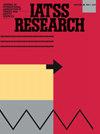利用多种数据驱动方法分析无信号交叉口基础设施改善行人安全的有效性
IF 3.3
Q3 TRANSPORTATION
引用次数: 0
摘要
本研究利用多种机器学习模型,包括统计分类器逻辑回归、决策树、随机森林和神经网络多层感知器(MLP),通过稳健的数据驱动方法,研究了无信号交叉口提高行人安全的有效性。虽然许多研究已经将预测模型应用于交通事故数据,但很少有研究使用多种机器学习算法系统地分析无信号交叉路口的行人碰撞严重程度。通过利用英国STATS19数据库的历史碰撞数据,确定并分析了影响无信号交叉口行人安全的关键因素。研究强调了随机森林和MLP模型的卓越预测性能,准确率分别为84%和86%,强调了它们处理碰撞数据中复杂、非线性关系的能力。特征重要性分析揭示了碰撞严重程度的关键决定因素。研究结果强调了有针对性的干预措施的必要性,以减轻碰撞后果的严重程度。尽管存在低报和数据输入偏差等挑战,但本研究为基础设施在行人安全中的作用提供了有价值的见解,为改善无信号交叉口设计的政策建议和未来研究提供了基础。本文章由计算机程序翻译,如有差异,请以英文原文为准。
Analysing the effectiveness of unsignalized crossing infrastructure in improving pedestrian safety using multiple data-driven approaches
This study investigates the effectiveness of unsignalized crossings to enhance pedestrian safety through a robust data-driven approach utilizing multiple machine learning models, including the statistical classifier Logistic Regression, Decision Tree, Random Forest, and Neural Network Multi-Layer Perceptron (MLP). While numerous studies have applied predictive models to traffic crash data, few have systematically analysed pedestrian crash severity at unsignalized crossings using multiple machine learning algorithms. By leveraging historical crash data from the UK's STATS19 database, key factors influencing pedestrian safety at unsignalized crossings were identified and analysed. The research highlights the superior predictive performance of Random Forest and MLP models, with accuracies of 84 % and 86 %, respectively, underscoring their capability to handle complex, nonlinear relationships in crash data. Feature importance analysis revealed critical determinants of crash severity. The findings emphasize the need for targeted interventions to mitigate crash severity of crash outcomes. Despite challenges like underreporting and data imputation biases, this study provides valuable insights into the role of infrastructure in pedestrian safety, offering a foundation for policy recommendations and future research on improving unsignalized crossing designs.
求助全文
通过发布文献求助,成功后即可免费获取论文全文。
去求助
来源期刊

IATSS Research
TRANSPORTATION-
CiteScore
6.40
自引率
6.20%
发文量
44
审稿时长
42 weeks
期刊介绍:
First published in 1977 as an international journal sponsored by the International Association of Traffic and Safety Sciences, IATSS Research has contributed to the dissemination of interdisciplinary wisdom on ideal mobility, particularly in Asia. IATSS Research is an international refereed journal providing a platform for the exchange of scientific findings on transportation and safety across a wide range of academic fields, with particular emphasis on the links between scientific findings and practice in society and cultural contexts. IATSS Research welcomes submission of original research articles and reviews that satisfy the following conditions: 1.Relevant to transportation and safety, and the multiple impacts of transportation systems on security, human health, and the environment. 2.Contains important policy and practical implications based on scientific evidence in the applicable academic field. In addition to welcoming general submissions, IATSS Research occasionally plans and publishes special feature sections and special issues composed of invited articles addressing specific topics.
 求助内容:
求助内容: 应助结果提醒方式:
应助结果提醒方式:


